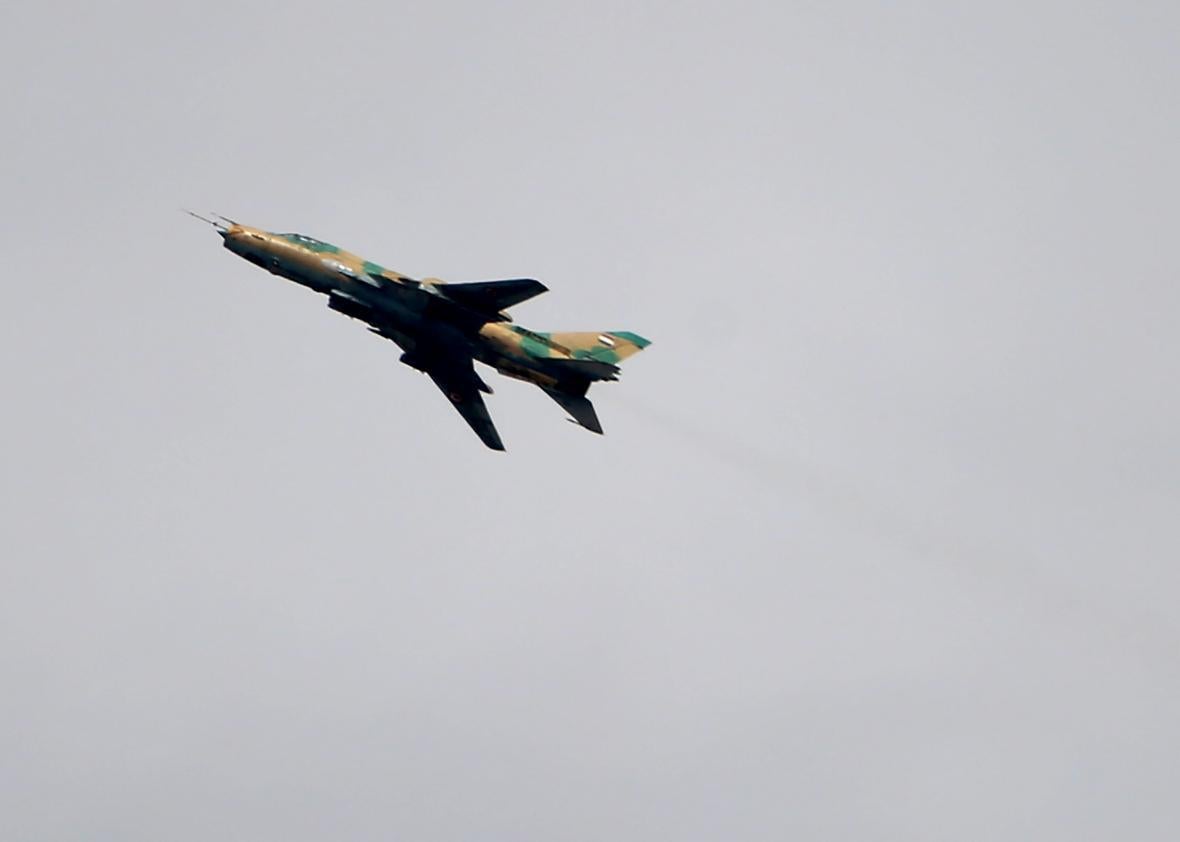The White House issued an unusual, specific public warning Monday to the Syrian government, accusing Bashar al-Assad’s regime of planning another chemical weapons attack and vowing that it would “pay a heavy price” if the attack were carried out.
Ambassador to the United Nations Nikki Haley followed up, saying that the governments of Iran and Syria would also be held responsible for such an attack:
The announcement caught at least a few members of the U.S. national security apparatus off guard. BuzzFeed, the AP, and the New York Times reported that some Defense and State officials had no idea the White House was about to release this statement and that they had no idea where the information it was based on came from.
The White House on Tuesday denied these reports, saying that State, Defense, the CIA, and the Office of the Director of National Intelligence had all been involved in the decision to make the announcement. Whoever was involved, it’s unusual to see such a public and specific warning based on what was presumably classified intelligence.
The Pentagon said Tuesday that the warning was prompted by unspecified activity observed at Syria’s Shayrat Air Base, the same base that the U.S. hit with a barrage of Tomahawk missiles in April in response to a deadly chemical weapons attack. That attack was the first direct U.S. strike against Assad’s forces since the beginning of the Syrian civil war in 2011 and marked a major shift from President Donald Trump, who had indicated during his campaign that his priority would be fighting ISIS and that he was willing to cooperate with both the Syrian government and Russia to target the group.
Tensions have only grown since then. In May, the U.S. launched airstrikes against pro-Assad forces that had ventured close to a base where U.S.-backed rebels were training. The U.S. shot down two Iranian-made drones in early June. Then last week, the U.S. shot down a Syrian fighter jet amid clashes between regime forces and U.S.-backed fighters in northern Syria.
Both the Syrian and Russian governments—which still deny that the regime carried out the April chemical attack—dismissed the latest U.S. allegations.
The immediate fallout of this week’s accusation is likely to be limited. The United States’ main priority is still ISIS, and despite the recent incidents with Syria, there’s no reason to think that priority has changed. But as Secretary of Defense James Mattis recently acknowledged, things are going to get a lot more complicated if and when ISIS’s de facto capital in Raqqa falls. A confrontation between pro-regime forces and the U.S.-backed fighters—Kurdish and Arab—who have been battling ISIS seems almost inevitable, and the administration has signaled it’s willing to use force against Assad. Given that opposition to Syria’s ally Iran is emerging as the organizing principle of the Trump administration’s Mideast strategy, it seems unlikely that the U.S. will agree to simply cede areas captured from ISIS back to Assad. The post-ISIS phase of Syria’s deadly proxy war could be just as messy, dangerous, and deadly.
